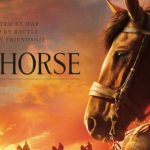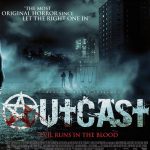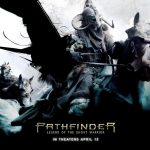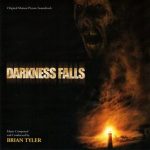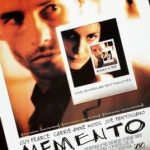Outcast (2010)
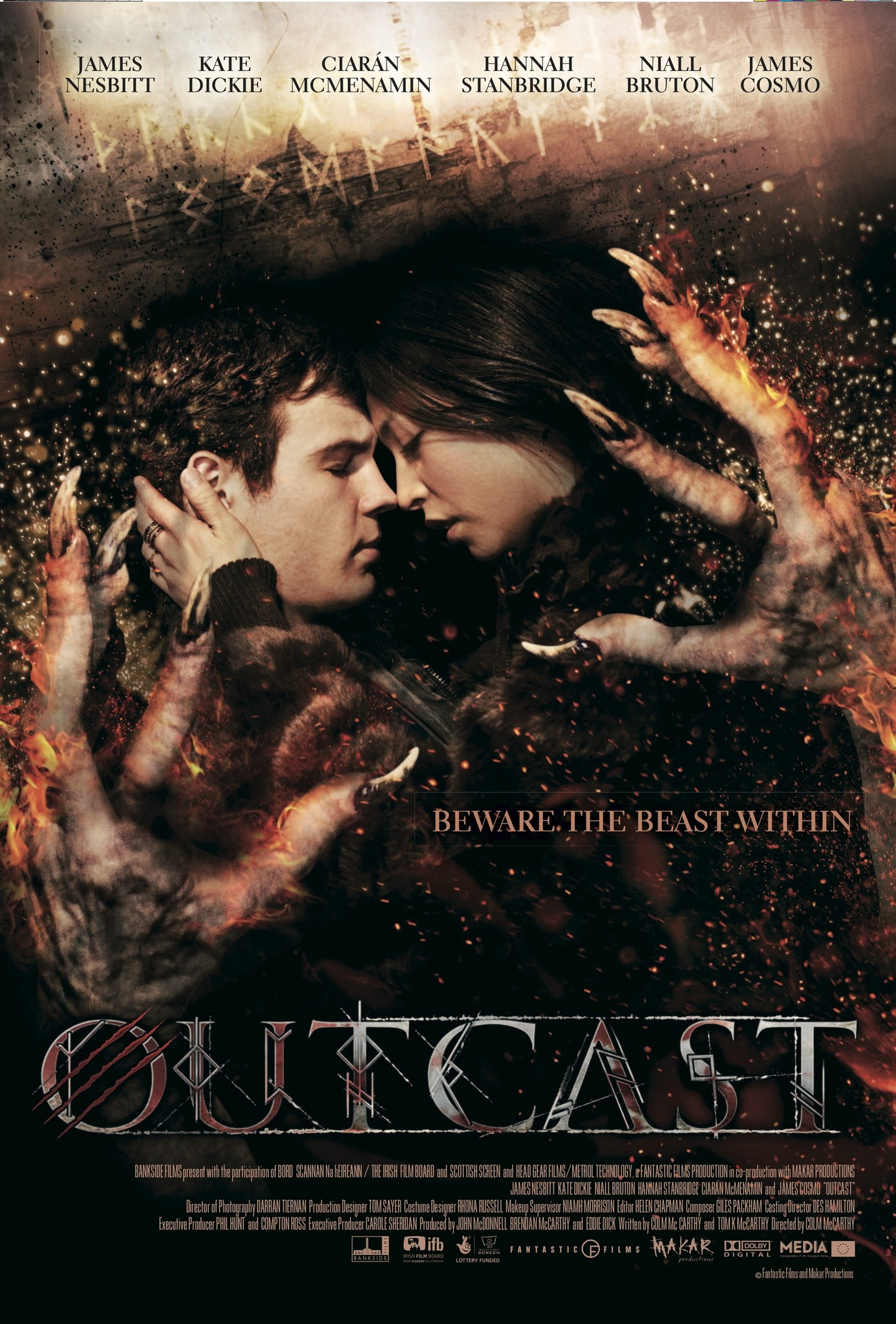
Outcast (2010) is a gritty, atmospheric horror-thriller set in the shadowy streets of Edinburgh, Scotland, and directed by Colm McCarthy. The film is an intriguing blend of supernatural horror, dark fantasy, and urban fantasy, with a unique Celtic mythological twist. The movie doesn’t follow the traditional narrative structure of many horror films, offering a darker, more contemplative examination of the monsters that lurk not only in the physical world but within the human psyche
Suggested videos for you:
Plot Overview
The film opens with a haunting premise: a mother and her son, Fergal (Niall Bruton), flee from their troubled past in Ireland, only to find themselves facing a far more insidious threat in the form of a supernatural creature. Fergal’s mother, Mary (Kate Dickie), is a hardened woman who hides a disturbing secret about their family’s cursed history. After settling into a dilapidated house on the outskirts of Edinburgh, the pair are drawn into a battle against a terrifying creature known as the “fae,” an ancient, almost inhuman being that has been hunting Fergal due to his bloodline’s connection to the supernatural realm.
At the heart of the story is Fergal’s internal struggle. He is an outcast in society, burdened by his heritage, and is reluctant to accept his role in the conflict between humans and the fae. This supernatural being, referred to as a “cailleach,” is a monstrous, deadly force that serves as a manifestation of the past’s unresolved horrors, threatening both Fergal’s immediate safety and his mental state. As the film progresses, Fergal must confront his fears, and the complex relationship between mother and son unfolds, revealing more about the curse that ties their fate together.
In addition to this central conflict, the film introduces a supporting character, an enigmatic ex-soldier named Cathal (James Cosmo), who becomes involved in the battle against the fae. He offers insight into the dangerous and ruthless world that the fae inhabit, adding a sense of urgency to the unfolding horror.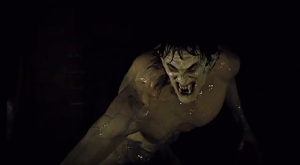
Themes and Symbolism
One of the most compelling aspects of Outcast is its exploration of isolation and the fear of being an outsider, symbolized through both the characters and the supernatural elements. Fergal’s status as an outcast is not merely a reflection of his physical exile but a metaphor for his disconnection from both the world around him and his own identity. This theme of being cast out is woven throughout the film, from the characters’ relationships to their environment to the very nature of the fae itself.
The cailleach, as a mythical creature, draws heavily from Celtic mythology, embodying elements of ancient tradition and folklore. Its role as both a literal and metaphorical predator emphasizes the film’s thematic focus on inherited guilt and trauma. Fergal’s fight against this creature is also a struggle against his own past, a confrontation with the demons (both literal and figurative) that have haunted him since childhood.
Additionally, Outcast delves into the themes of maternal protection and sacrifice. Mary’s motivations throughout the film are rooted in a desperate need to protect Fergal from the horrors of the world, though her approach is often harsh and riddled with secrets. The film explores how the trauma from one generation can be passed down, affecting the next, and it reflects on the cost of trying to break free from the cycle of pain and violence.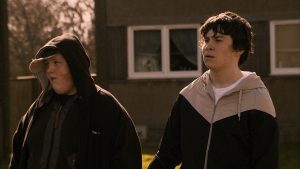
Characterization and Performances
The film’s characters are dark and complex, with strong performances from the cast that elevate the story’s emotional stakes.
Niall Bruton’s portrayal of Fergal is nuanced and convincing. He effectively conveys the internal conflict of a young man struggling with his inherited fate and his desire for normalcy, making him a relatable figure for the audience. Fergal is both sympathetic and frustrating in his reluctance to fully embrace his role in the conflict, but this emotional ambivalence makes him a more compelling protagonist.
Kate Dickie, known for her work in Red Road and The Witch, brings depth to her role as Mary. She plays the protective yet emotionally distant mother with a level of intensity that draws the viewer into her conflicted feelings. Mary’s actions often seem to come from a place of necessity rather than genuine love, and Dickie’s performance underscores this complex maternal relationship.
James Cosmo, as the hardened ex-soldier Cathal, brings a grounded presence to the film. His role as a mentor to Fergal adds a touch of action and gruff wisdom to the proceedings. His stoic demeanor provides a sharp contrast to the more emotionally turbulent characters, giving the film a sense of balance.
The fae itself, portrayed as a terrifying, otherworldly creature, is an effective antagonist, not in the traditional sense of mindless horror but as a symbol of the ancestral curse that must be confronted. The creature’s haunting design and physical presence are both unsettling and visually striking.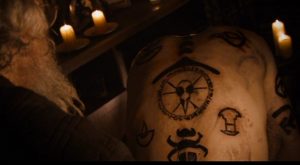
Cinematography and Direction
The film’s atmosphere is one of its strongest elements. McCarthy’s direction keeps the tone consistently tense and grim, while the urban and natural landscapes of Edinburgh serve as a fitting backdrop for the supernatural conflict. The film leans into muted tones and dark, shadowy lighting to create an oppressive atmosphere that mirrors the characters’ emotional states. The urban setting, with its decaying industrial buildings and fog-choked streets, enhances the film’s overall sense of foreboding.
The blending of modern and ancient worlds is executed well, with scenes set against both contemporary urban environments and more rural, isolated locations that invoke the mythic past. The juxtaposition between the gritty urban streets and the supernatural elements highlights the collision of the ordinary and the otherworldly, a core theme in the film.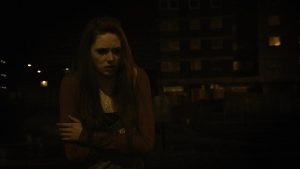
Sound and Music
The film’s score is minimalistic, with quiet, haunting music that enhances the mood without overwhelming the scenes. The use of sound design is also subtle but effective, adding to the tension in key moments. The natural sounds of the environment—the rustling of trees, the wind, distant footsteps—contribute to the feeling of dread that permeates the story.
Final Thoughts
Outcast is an unconventional horror film that subverts traditional genre expectations by prioritizing atmosphere and character over shock value and gore. While it may not appeal to fans of high-octane action or straightforward horror, it’s a thought-provoking exploration of trauma, guilt, and the consequences of one’s lineage.
The slow-burn narrative, combined with rich Celtic mythology and a focus on the emotional dynamics of its characters, makes Outcast a film that lingers long after the credits roll. It’s a film that dares to blend urban decay with ancient folklore, offering a dark, evocative exploration of isolation and redemption. Its eerie atmosphere and complex themes make it a standout for those seeking a more contemplative horror experience.



